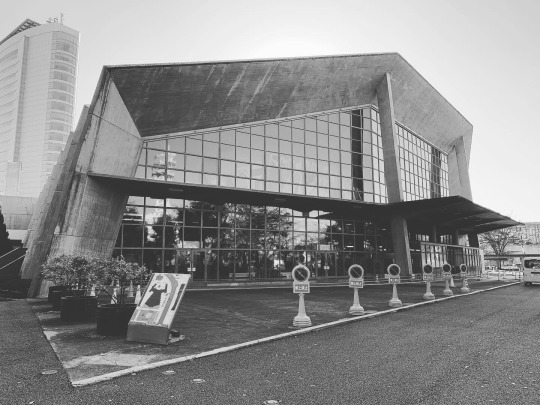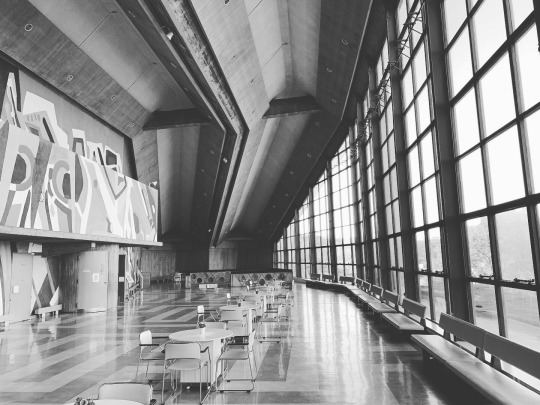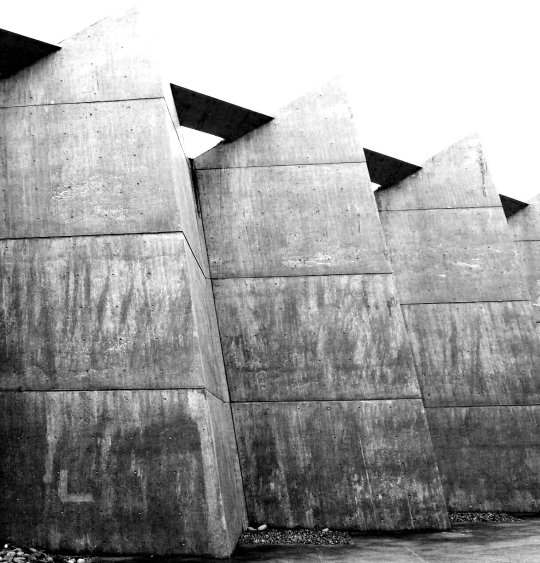#Antonin raymond
Photo
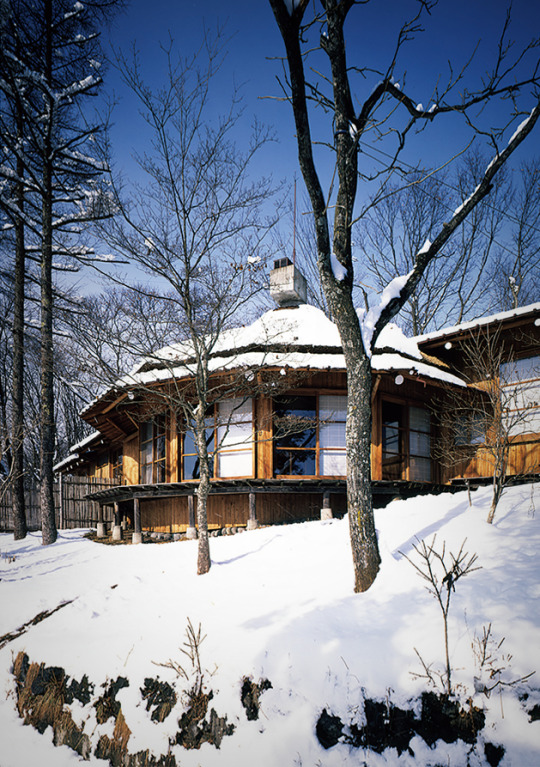


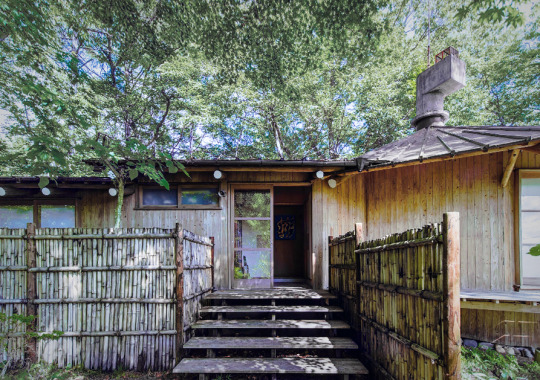
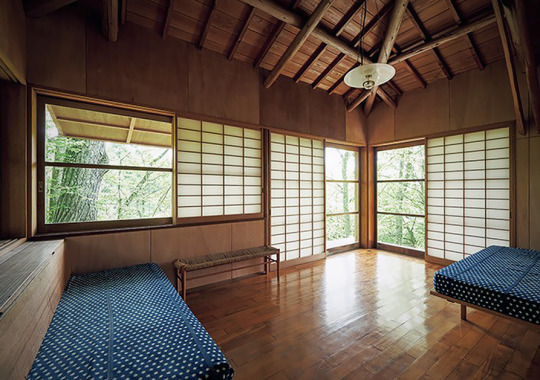

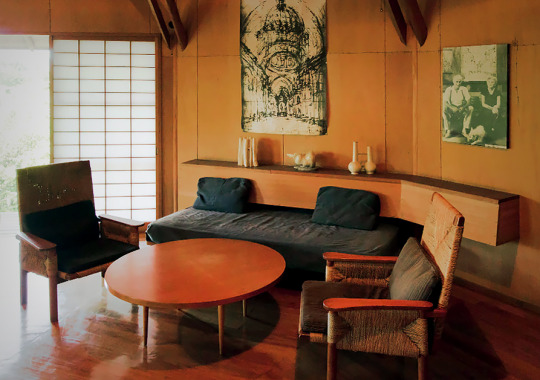
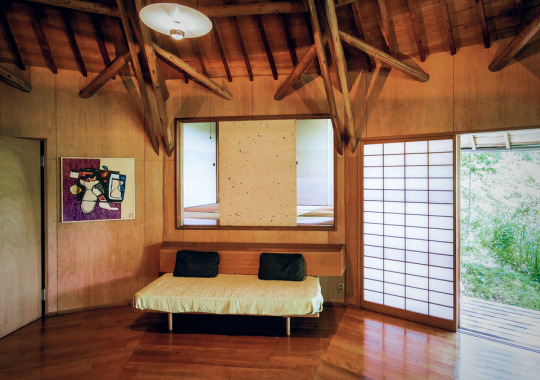
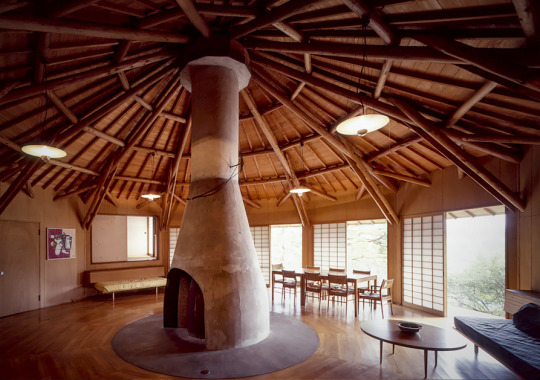
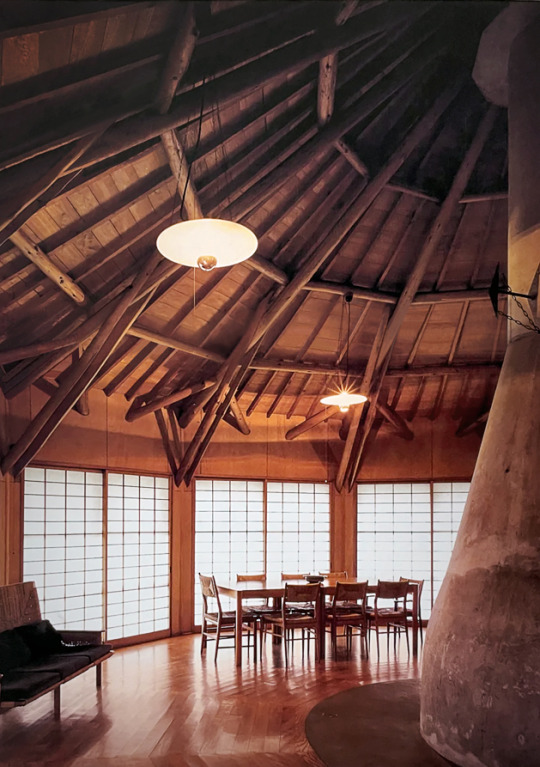
1016. Antonin Raymond & Noémi Raymond /// New Karuizawa Studio and Summer House /// Nagakura, Karuizawa, Kitasaku-gun, Nagano, Japan /// 1960-62
OfHouses presents: Readings, part I - Kenneth Frampton, The Other Modern Movement.
(Source: JA The Japan Architect 33/1999; Raymond Sekkei; houzz.jp.)
#Readings1#Antonin Raymond#Noémi Raymond#Japan#60s#OfHouses#oldforgottenhouses#www.ofhouses.com#thecollectionofhouses
113 notes
·
View notes
Text
不二家横浜センター店
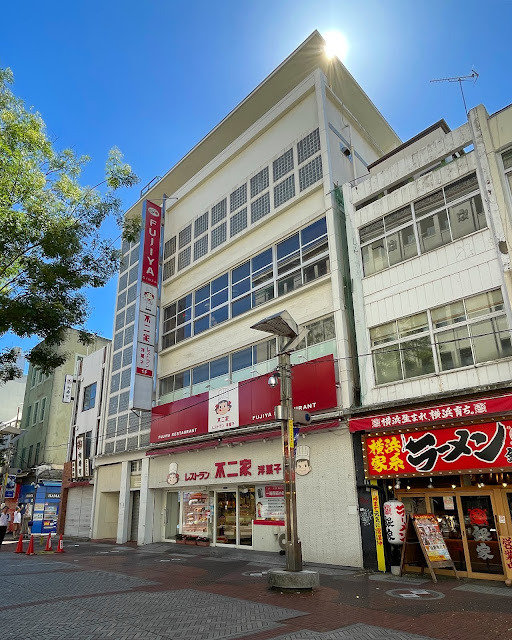
0 notes
Quote
Hammer films, since going soft, have won tolerant critical smiles but our defence of the genre applies only to those scenes which aroused disgusted protest when they appeared. As Török remarked, 'horror has become in Great Britain a new genre of cinema, clearly defined, with its own rules and its own style. One hears, and rightly so, a great deal about Free Cinema. But, by its power of suggestion, its frenzy, its invitation to voyage towards the land of dark marvels and erotic fantasy, is not the horror film the real British "free cinema"?' In other words, English pulp movies reactivated the Theatre of Cruelty some years before the English rediscovery of Artaud.
Raymond Durgnat, A Mirror for England
#raymond durgnat#a mirror for england: british movies from austerity to affluence#hammer film productions#jean-paul torok#antonin artaud
0 notes
Text
My list of books I wish to have read by the end of the year:
Quiet Days in Clichy -- Henry Miller
La petite vertu -- James Hadley Chase
Breakfast of Champions -- Kurt Vonnegut Jr.
Call at Corazon -- Paul Bowles
Solaris -- Stanislaw Lem
Slaughterhouse-Five -- Kurt Vonnegut Jr.
The Savage Detectives -- Roberto Bolano
La Boutique Obscure: 124 Dreams -- Georges Perec
Mon corps pour me guérir: décodage psychobiologique des maladies -- Christian Flèche
A Joseph Campbell Companion: Reflections on the Art of Living -- Joseph Campbell
Speak, Memory -- Vladimir Nabokov
Supreme Influence: Change Your Life with the Power of the Language You Use -- Niurka
The Journey and the Guide: A practical course in Enlightment -- Maitreyabandhu
Egon Schiele: Drawings and Water-colours -- Egon Schiele, Erwin Mitsch
Taking the Leap: Freeing Ourselves from Old Habits and Fears -- Pema Chodron
Rumi Revealed: Selected Poems from the Divan of Shams -- Rassouli
Confessions of an Art Addict -- Peggy Guggenheim
The Executioner's Song -- Norman Mailer
Drive Your Plow Over the Bones of the Dead -- Olga Tokarczuk
Flights -- Olga Tokarczuk
America -- Jean Baudrillard
Too Much and Not the Mood: Essays -- Durga Chew-Bose
I Had Nowhere to Go -- Jonas Mekas
Francesca Woodman -- Marco Pierini
Yves Klein -- Hannah Weitmeier
Dune (Dune #1) -- Frank Herbert
Oreillers d'herbes -- Natsume Soseki
Les Choses humaines -- Karine Tuil
The Energy of Slaves: Poems -- Leonard Cohen
Selected Writings - Antonin Artaud
The Sisters Brothers -- Patrick deWitt
Pastoralia -- George Saunders
Signs Preceding the End of the World -- Yuri Herrera
Last Train to Memphis: The Rise of Elvis Presley -- Peter Guralnick
Break, Blow, Burn -- Camille Paglia
Voyage au bout de la nuit -- Louis-Ferdinand Céline
Philip K. Dick: In His Own Words -- Philip K. Dick
Autobiography of a Yogi -- Paramahansa Yogananda
A Confederacy of Dunces -- John Kennedy Toole
Babel -- Patti Smith
Keith Haring Journals -- Keith Haring
Foam of the Daze -- Boris Vian
Inherent Vice -- Thomas Pynchon
The Black Power Mixtape 1967-1975 -- Goran Olsso
Le Diable au Corps -- Raymond Radiguet
Bluets -- Maggie Nelson
Girl, Woman, Other -- Bernardine Evaristo
Devenir un ange -- Francesca Woodman
Faithfull: An Autobiography -- Marianne Faithfull
The Master and Margarita -- Mikhail Bulgakov
Eve's Hollywood - Eve Babitz
In Watermelon Sugar -- Richard Brautigan
7 notes
·
View notes
Text


Despite being named the father of Japanese modern architecture, Kunio Maekawa (1905-86) never quite received the same amount of global attention as e.g. Kenzo Tange did. The 117th issue of JA The Japan Architect with a fabulous retrospective of 22 key works ranging from his Kimura Industrial Laboratory from the early 1930s to the Hirosaki Municipal Crematorium provides ample input for a reevaluation of Maekawa’s contribution to Japanese architecture.
The introduction to the issue is a very insightful conversation between editor Hera van Sande and Hiroshi Matsukama who has been with the Maekawa office since 1980 and who sheds light on the master’s character, working method, design philosophy and the importance of Le Corbusier for Maekawa (Maekawa spent two years in the office of LC). The latter aspect is further elaborated by Van Sande in her essay about Le Corbusier and Maekawa which provides additional insights into the long-lasting influence LC exerted on Maekawa. In this context it should also be noted that Antonin Raymond, with whom Maekawa collaborated after his return to Japan in 1930, was an equally important influence and a catalyst for Maekawa to rekindle with traditional Japanese architecture.
Through the dense presentation of the architect’s life and works, projects, texts and plans JA 117 is an eye-opening read and warmly recommended to anyone wanting to get to know and understand the work of a Japanese modern master.
#kunio maekawa#the japan architect#monograph#architecture#japan#architecture book#architectural history#book
49 notes
·
View notes
Photo

Ah, 'Uncrating the Japanese House' on Junzo Yoshimura, Antonin and Noémi Raymond, and George Nakashima In 1953, Japanese architect Junzo Yoshimura designed a now-classic Japanese house and garden that he called @shofuso It was built in Nagoya, Japan, and shipped to New York in 1954, where it was exhibited @themuseumofmodernart and then relocated to Philadelphia’s Fairmount Park. This extensively illustrated volume centers on Yoshimura’s design for Shofuso and two allied sites located in New Hope, Bucks County, Pennsylvania: @raymondfarmcenter (1939–41), a live-work residence built by Antonin and Noémi Raymond within the fabric of an existing 18th-century Quaker farmhouse; and Nakashima Studios, a complex of structures designed by George Nakashima over three decades (1947–77) to serve his furniture-making business and as his family’s home. This volume documents an exhibition of objects and ephemera mounted at Shofuso. New York–based architectural photographer Elizabeth Felicella captures each site in a portfolio of newly commissioned images. Essays by @kentadashi and @wwhitake illustrated with historical photographs, family snapshots and architectural drawings, further elucidate this important chapter in the history of modern architecture and design. Pictured here: Shofuso, Nakashima Studios and the Raymond Farm. Read more via linkinbio. #uncratingthejapanesehouse #shofuso #junzoyoshimura #raymondfarm #nakashima #nakashimastudios #georgenakashima #elizabethfelicella https://www.instagram.com/p/CmHWSBrui5o/?igshid=NGJjMDIxMWI=
#uncratingthejapanesehouse#shofuso#junzoyoshimura#raymondfarm#nakashima#nakashimastudios#georgenakashima#elizabethfelicella
3 notes
·
View notes
Text
ya no se que dia es ayer
BITÁCORA RECUPERADA DEL 25 Y 26 ENERO, Y DEL 2 Y 7 DE FEBRERO DEL 2023.
Esta bitácora es un resumen de las don anteriores que no logré terminar.
¿QUÉ PASÓ?
Tuvimos nuestra ultima clase presencial por pepe antes de que se vaya a Europa. En esa clase del 25 de enero, nos dio catedra sobre el movimiento SURREALISTA. Luego al día sig. hablamos un poco sobre la farsa y el cabaret, y también leímos nuestras escrituras automáticas, la mía por desgracia la perdí. Para el 2 de Febrero ya nos vimos de manera virtual con muchas fallas técnicas debido al internet de la escuela. Ahí analizamos los performances que presentamos antes de que pepe se fuera de viaje. logramos hablar del mío. El lunes 6 de febrero no tuvimos clase porque fue inhábil. Hoy 7 de febrero, cada quien en nuestra casa a través de meet, terminamos de analizar los performances y también alcanzamos a platicar un poco sobre las principales referencias del kabarett alemán post Francia.
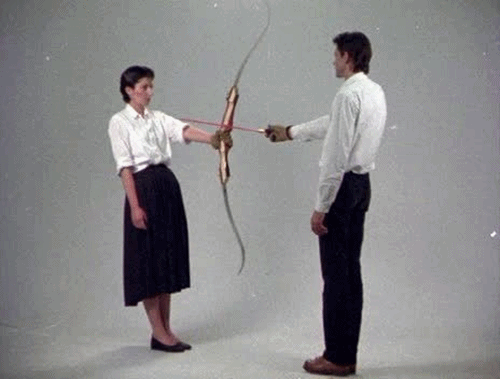
¿QUÉ APRENDÍ?
el movimiento SURREALISTA. cómo este nació para escandalizar a los burgueses, haciendo sobresalir la pulsión de VIDA Y MUERTE. Deseo, farsa sinlogica, sin juicio, sin etica, monomanía, viciosa. el arte no tiene que ser una imitacion de la realidad sino de los sueños. prolifera una violencia que se explica a través del psicoanálisis de S. Freud.
Referencias: Impresiones de Africa(1910) Raymond, Luis Buñuel, Jean Cocteau, El teatro y su doble de Antonin Artaud, Alicia en el país de las maravillas de Lewis Carroll, poema El ano solar” de Georges Bataille, Paul Eduard poeta surrealista.
En el performance no hay neutralidad. El surrealismo va en contra del futurismo porque recupera lo onírico de la naturaleza. buscar el desplazamiento del signo. ¿Cómo transgredir con la accion? El publico no siempre ba a ser obediente o amble. El cuerpo desnudo transgrede y agrede éticamente. Si alguien no sigue las instrucciones se vuelve un caos. la accion de mi performance no fue tan progresiva. una digresión: terminar tirándome la cubeta encima. Me falto un remate. En el cabaret/performance hay que ATRAPAR a los espectadores.
ARTE ACCIÓN - progresión regresión digresión - HAPPENING - el uso del cuerpo - accion transgresora: espacio cuerpo moral ética
KABARETT: camerino. expresión francesa. ¿Qué implica? libertad, sátira, critica política, recreación, inversión de roles, imitación caricaturización, la musica como catalizador.
¿se puede hacer cabaret sin borrachos?
Referencias: Cabaret de Bob Fossi, La pasión de Tito Vasconselos.
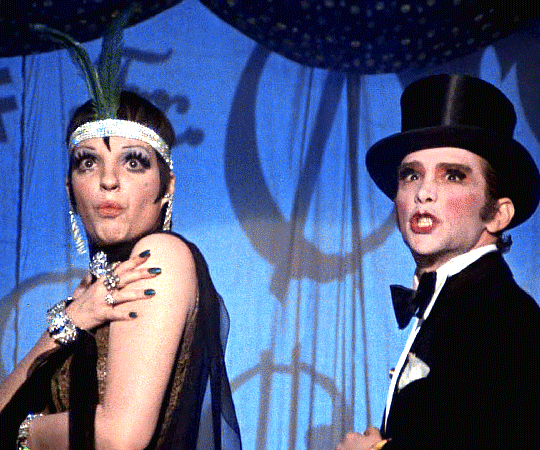
¿QUÉ SENTÍ?
creo que estoy aprendiendo mucho en poco tiempo. Que lo que he dado por sentado como “logico” en varios de mis procesos creativos no esta tan sencillo y que puedo seguir complejizando mi poetica y mi aproximacion al arte accion, ya que despues de todo es un lenguaje que me gusta mucho y procuro. Siento ganas de aprender mucho mas de cabaret y entrenarme en ello. Avido de subirme a mis tacones y hacer un gran show. confirme tambien mi afinidad y predicción al movimiento surrealista, que de los tres principales movimientos que estamos viendo es al que mas cercano he estado desde la preparatoria.
0 notes
Text
Skillion Roof Design
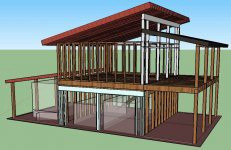
If you are looking for a simple and affordable roof design, then consider a skillion roof. The basic design of this roof is based on a triangle shape with the main roof slanted to one side and a second, overlapping roof slanted down to the ground. The two roofs overlap in the center and drain into a gutter system on both sides of the structure. Corrugated metal is a common material for this type of roof and is very lightweight.
Split skillion roof
A Split skillion roof is a hybrid of gable and Skillion roofing. The split style is composed of many Skillion roofs of different heights, which creates a water drainage system that is efficient and effective. It is also very customizable. There are numerous styles to choose from.
Split skillion roofs can be a modern or traditional style. Both designs can be attractive and functional. The split style is becoming increasingly popular in recent years. This style offers many advantages over other roof designs. Here are some of them: — The ability to add solar panels and skylights. This helps you reduce your energy bills.
- The split design is an attractive choice for homeowners who want a unique aesthetic. It is also very energy-efficient. The steep angles of this type of roof create a space that can be used for solar panels. It also reduces interior ceiling height. The split design also allows for partial lofts, which can provide additional overhead space.
- Split skillion roofs can last longer than flat roofs. This is due to the steep pitch, which causes water to run off more efficiently. It also means that less water will collect in the lower portion of the roof, which means less leakage.
Butterfly roof
The butterfly roof is a unique form of inverted gable with wings. The design was first conceived by the great architect, Le Corbusier, in the 1930s. The architect’s original client, the Spanish heiress Eugenia Errazuriz, rejected the design and went bankrupt before he could construct it. The design eventually found its way into the hands of Czech architect Antonin Raymond, who used it to build a house in Karuizawa, Japan. The home was featured in the 1934 Architectural Record.
The butterfly roof design is a versatile one and can be installed on a variety of different styles of houses. This type of roof does not offer as much protection as a traditional roof but allows for greater air flow through the attic. However, you should remember that butterfly roofs are not DIY projects, and that a skilled professional will be necessary for installation.
Another benefit of the butterfly roof design is that it allows light to travel deeper into the habitable spaces of buildings. Because the edge walls are higher than the center walls of the house, the butterfly roof design is able to provide adequate light to the entire room. This type of roof is also suited to cold climates, since it allows sufficient heat to reach the interior spaces.
Another benefit of a butterfly roof is that it can withstand strong winds, making it an ideal choice for coastal properties. Its design also allows the installation of solar panels on top of the roof, making the home more energy-efficient. However, it should be noted that a butterfly roof requires more time and money to build than a conventional roof. Additionally, a butterfly roof may require additional labor and licensing for the installation.
Oval shape roof
There are several variations of skillion roof designs. The classic oval-shape skillion roof is one of them. Another variation is the butterfly roof. This is the same as the oval shape but has rounded edges and is perfect for larger indoor spaces. This design is less common in residential buildings and is more appropriate for commercial projects.
Another popular skillion roof design is the curved skillion roof. The curved shape gives it a more organic feel. Curved roofs are also better protected from wind. Oval roofs aren’t typically used in residential designs because they tend to be costly. However, you can combine the oval shape with a traditional gable roof for an impressive effect.
Oval-shaped roofs are more expensive than their square-shape cousins. A typical oval-shaped roof design consists of several skillion sections that are at different heights. The steep slope of an oval-shape skillion roof helps it to drain water easily and makes it ideal for industrial and manufacturing buildings. These roofs can also accommodate skylights and solar panels.
Oval-shape skillion roof designs are more durable and last longer than traditional flat-shape roofs. They are suitable for inner cities as well as the suburbs.
0 notes
Photo
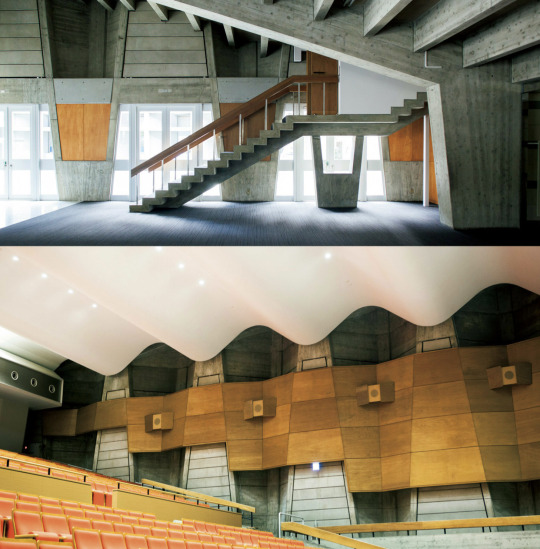
Gunma Music Centre. 1961.
Architect: Antonin Raymond
Photographer: Kiyoshi Nishioka
#Antonin raymond#japan#japanese architecture#brutalist interiors#mid centruy modern#mid century#archilovers#concrete architecture#japanese modernism
509 notes
·
View notes
Photo
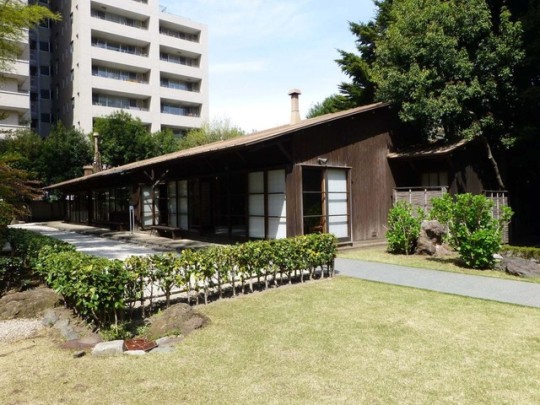
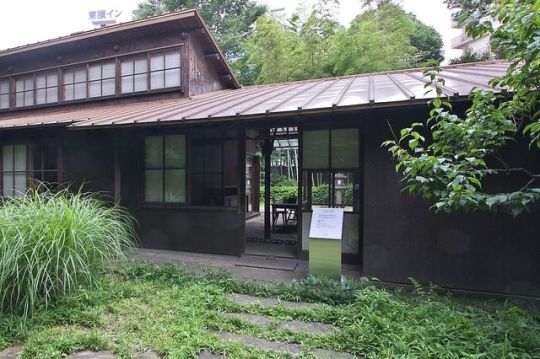

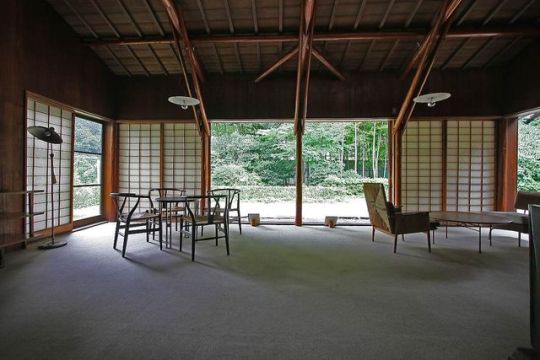
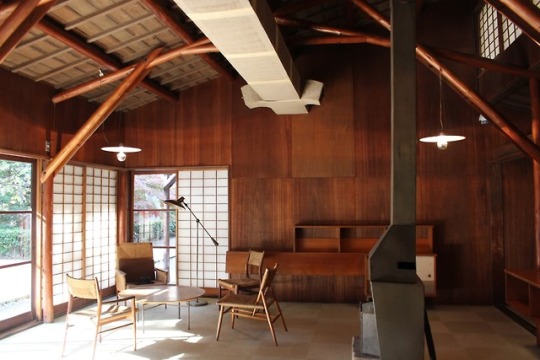
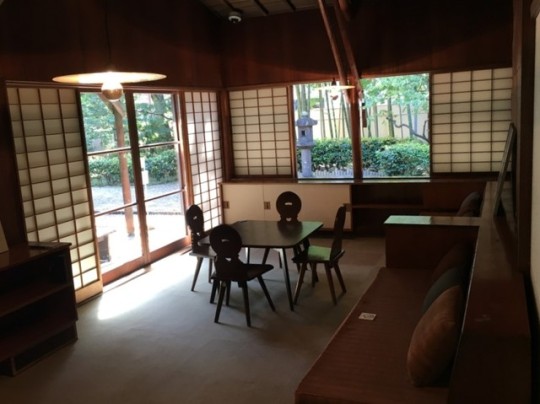
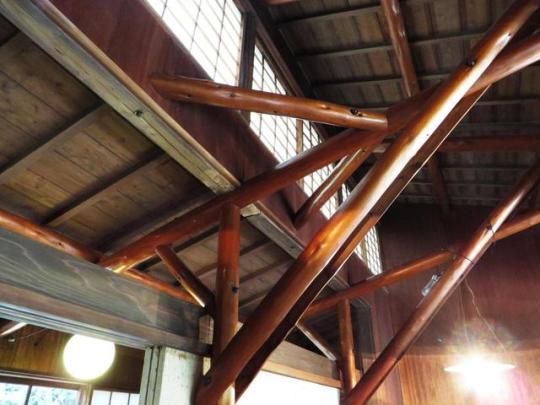
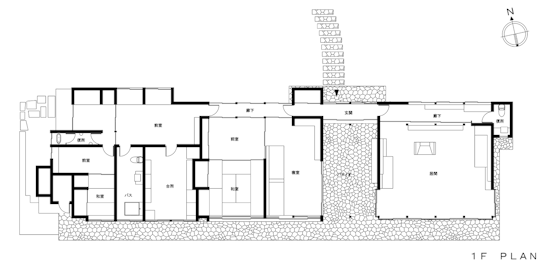
Antonin Raymond
1952, Fusaichiro Inoue House
71 notes
·
View notes
Photo

Antonin Raymond Details
1 note
·
View note
Photo

ANTONIN RAYMOND, The Raymond House and Studio, Azabu, Tokyo, Japan, 1951. Image courtesy Koichi Kitazawa. / The English Home
#raymond house#antonin raymond#japanese architecture#architecture#modernism#mid-century modern#MCM#tokyo#japan#black and white#interior#decoration#design#scandinavian collectors#azabu#1950s
462 notes
·
View notes
Photo

80 notes
·
View notes
Photo
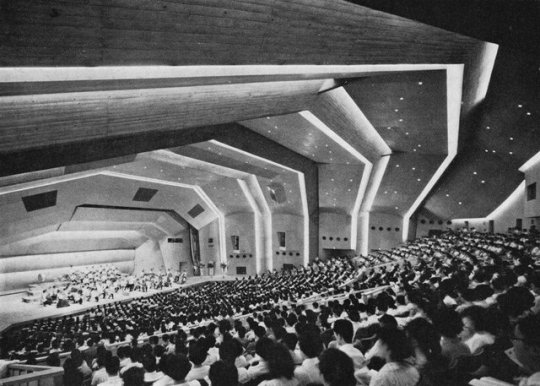
Antonin Raymond & Ladislav Leland Rado’s Gunma Music Center, Takasaki, Japan, 1961 (via here)
#Antonin Raymond#Ladislav Leland Rado#architecture#concert#brutalism#concert hall#interior#Gunma#Takasaki#Japan#1960s
282 notes
·
View notes
